Basics of Star Formation
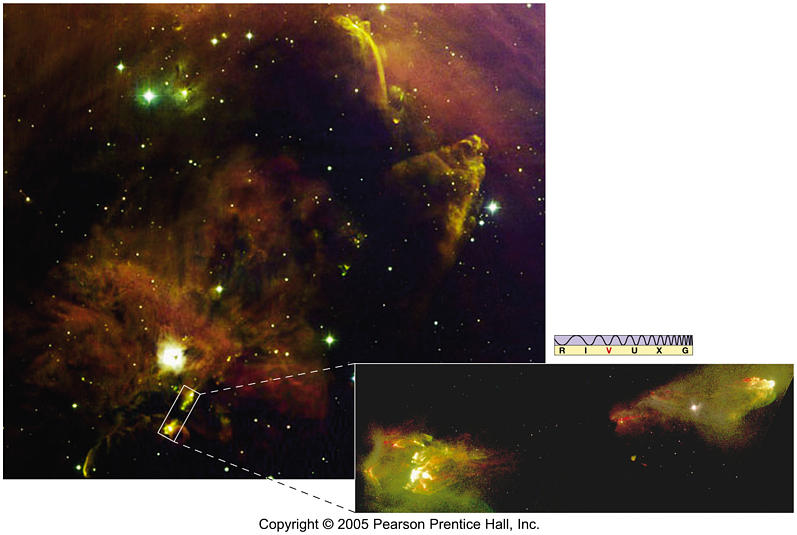 |
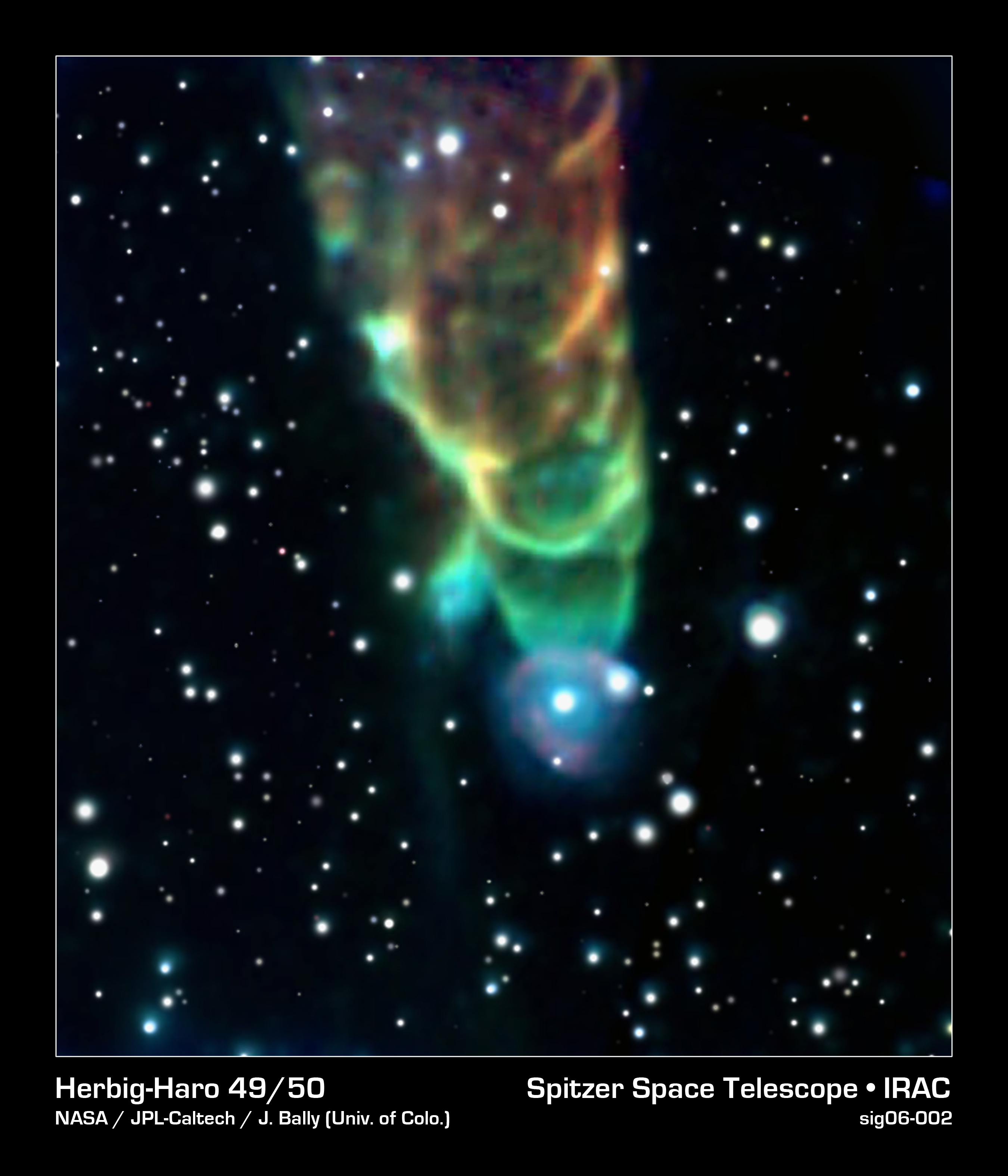 |
 |
 |
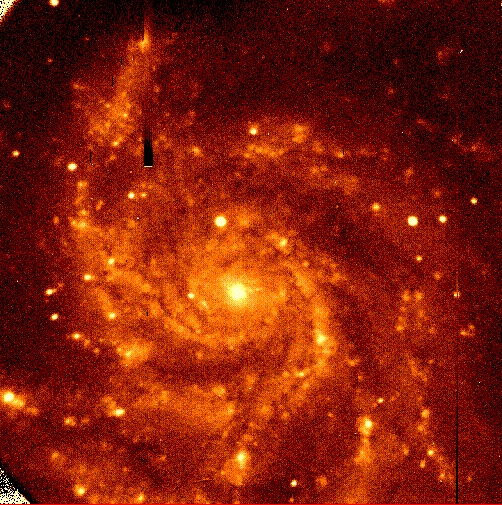
| As spiral arms move through the gas and dust disks of galaxies, the spiral may compress ISM clouds and trigger star formation. |
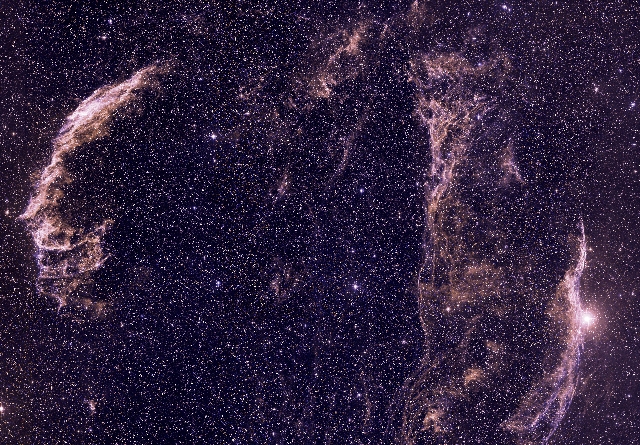 |
Shock waves generated by the deaths (explosions) of massive stars (Type II Supernovas) generates strong shock waves which may compress ISM clouds and trigger star formation. The picture shows the Cygnus loop in our Galaxy. |
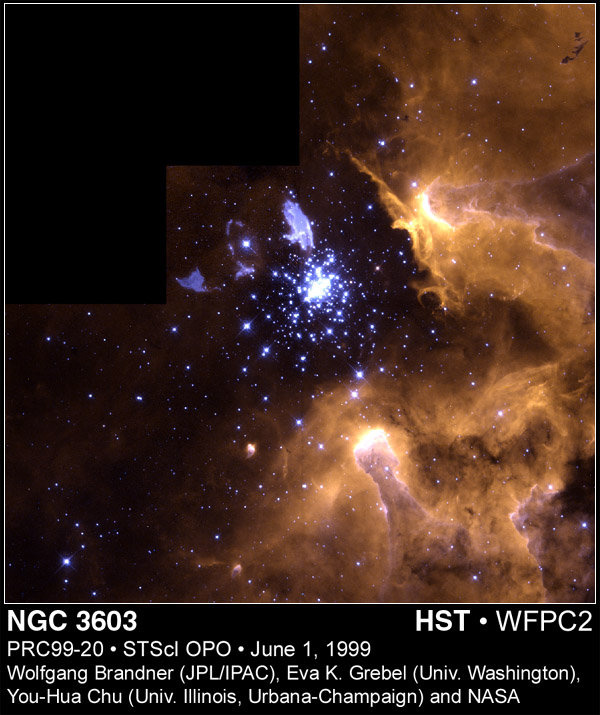 |
Intense stellar winds and radiation pressure (because of the high luminosity) from massive young stars may compress ISM clouds and trigger star formation. |

|
On the right are shown observations of the young star, HD 141569A.
|
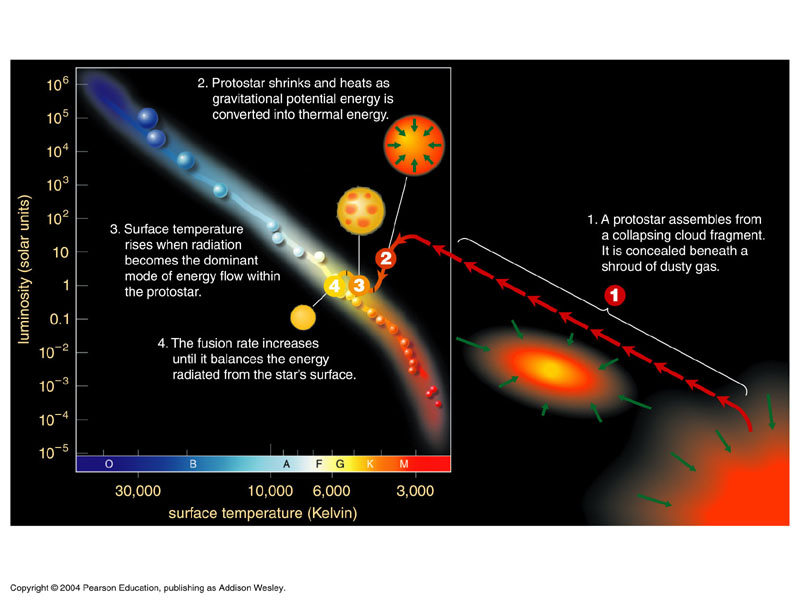
The protostar moves on the upward sloping (to the left) red track on the HR diagram. At the bend, it becomes convective and then drops along the nearly vertical path (the Hayashi Track). Often times on the Hayashi Track
It is conceivable that the Upper Mass Limit for Main Sequence Stars is due to the fact that the time required for the central portion of the cloud to collapse is so short that the protostar turns into a star before the outer layers of the cloud can fully merge with the star. In this case, the initial turn-on of the star drives off the rest of the cloud arresting the star formation process and limiting the mass of the star! This appears to occur for protostars with masses of 50-100 times the mass of the Sun.

|
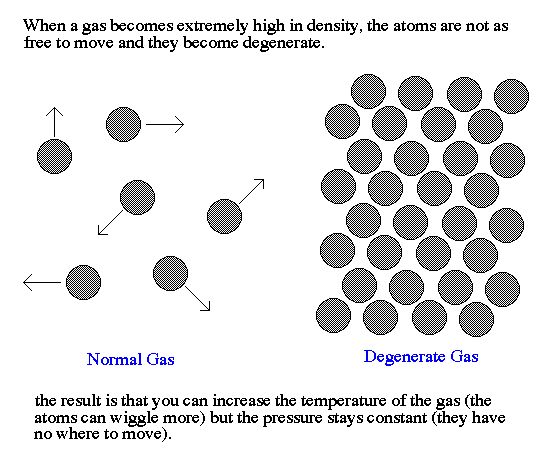
|
The preceding discussion concerned the formation of single stars. However, more than half (and perhaps up to 80 %) of all stars are in mulitple (double star, triple star, quadruple star, ... ) star systems. In addition, over 3,000 planets in nearly 1,000 extra-Solar planetary systems have been discoverd over the last 20 years. It is recognized that in a significant number of systems where planet formation is possible, planets seem to form. Planet formation is not rare. Apparently, the formation of multiple star systems and planetary systems is an important part of the overall star formation puzzle.
 |
|
To the upper right of center is the evolved blue supergiant called Sher 25. The star has a unique circumstellar ring of glowing gas that is a galactic twin to the famous ring around the supernova 1987A. The grayish-bluish color of the ring and the bipolar outflows (blobs to the upper right and lower left of the star) indicates the presence of processed (chemically enriched) material.
Near the center of the view is a so-called starburst cluster dominated by young, hot Wolf-Rayet stars and early O-type stars . A torrent of ionizing radiation and fast stellar winds from these massive stars has blown a large cavity around the cluster.
The most spectacular evidence for the interaction of ionizing radiation with cold molecular-hydrogen cloud material are the giant gaseous pillars to the right and lower left of the cluster. These pillars are sculptured by the same physical processes as the famous pillars Hubble photographed in the M16 Eagle Nebula.
Dark clouds at the upper right are so-called Bok globules , which are probably in an earlier stage of star formation.
To the lower left of the cluster are two compact, tadpole-shaped emission nebulae. Similar structures were found by Hubble in Orion, and have been interpreted as gas and dust evaporation from possibly protoplanetary disks (proplyds). The "proplyds" in NGC 3603 are 5 to 10 times larger in size and correspondingly also more massive.
The color difference between the supergiant's bipolar outflow and the diffuse interstellar medium in the giant nebula dramatically visualizes the enrichment in heavy elements due to synthesis of heavier elements within stars.
This true-color picture was taken on March 5, 1999 with the Wide Field Planetary Camera 2. Credit: Wolfgang Brandner (JPL/IPAC), Eva K. Grebel (Univ. Washington), You-Hua Chu (Univ. Illinois Urbana-Champaign), and NASA.